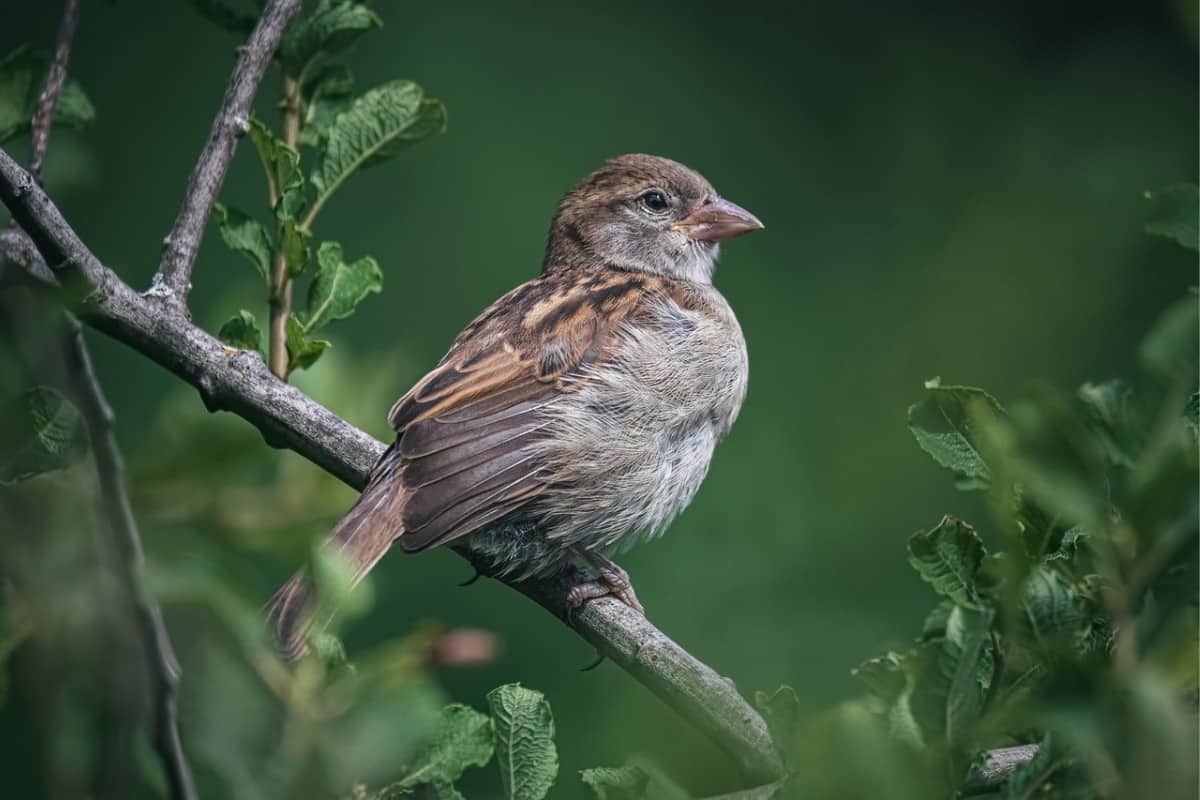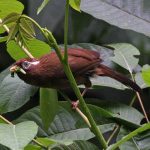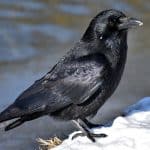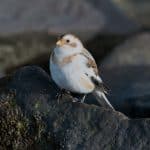Common Name: House Sparrow
Scientific Name: (Passer domesticus)| Size | Diet | Range in Hawaii | Status in Hawaii |
|---|---|---|---|
| 5.9 in. - 6.7 in. | seeds, grasses, weeds, and agricultural crops | Common on all islands | Least Concern |
The House Sparrow (Passer domesticus), also known as the English Sparrow, is a small and adaptable bird species that is native to Europe, Asia, and parts of Africa. With its distinctive brown and gray plumage and cheerful chirping, this bird is a beloved sight in its natural habitat. However, the species has also established itself as a naturalized (non-native) resident in Hawaii, where it has been present for over a century.
In this article, we’ll explore the fascinating world of the House Sparrow, its unique adaptations, and its behavior in the wild.
House Sparrow
Appearance
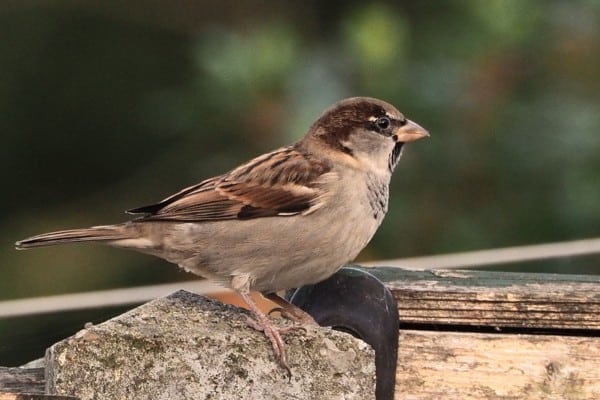
The House Sparrow is a small bird with a distinctive appearance. Adult males have a compact build, measuring about 5.9 to 6.7 inches (15 to 17 centimeters) in length from the tip of their beak to the end of their tail. They have a plump body with a rounded head and a short, thick bill.
The male House Sparrow has a unique plumage featuring a gray crown, black throat, and chestnut-brown nape. Their upperparts are streaked brown and black, while their underparts are pale gray. The wings display a combination of black, brown, and white, with white wing bars and black spotting.
In contrast, adult female House Sparrows are slightly smaller, measuring around 5.5 to 6.3 inches (14 to 16 centimeters) in length. Their overall coloration is less vibrant compared to males. Females have a pale brown crown, buff-colored underparts, and streaked brown upperparts. Their wings also exhibit the characteristic white wing bars and black spotting.
Juvenile House Sparrows have a similar appearance to adult females but with a less defined plumage pattern and a duller coloration overall. Their plumage gradually matures as they reach adulthood.
Diet
The House Sparrow has an opportunistic and versatile diet. It is primarily granivorous, meaning its diet consists mainly of seeds. House Sparrows feed on a wide range of seeds from various plants, including grasses, weeds, and agricultural crops. They are known to consume grains, such as wheat, barley, and corn, as well as sunflower seeds and millet.
In addition to seeds, House Sparrows also incorporate other food sources into their diet. They opportunistically feed on insects, especially during the breeding season when they need additional protein for themselves and their chicks.
House Sparrow may catch insects in mid-air or forage on the ground for small invertebrates like beetles, caterpillars, spiders, and flies. They also scavenge for scraps and food waste, making use of human-altered environments such as garbage dumps and outdoor eating areas.
House Sparrows have adapted well to urban environments and are often seen foraging around bird feeders, where they readily consume seeds provided for them. Their ability to exploit various food sources contributes to their success and widespread distribution in both rural and urban settings.
Nesting
The House Sparrow is a cavity-nesting bird species known for its adaptability in choosing nesting sites. They commonly build their nests in man-made structures such as buildings, eaves, and crevices, as well as in natural sites like tree cavities, thick vegetation, and shrubs.
House Sparrows construct their nests using a combination of grasses, straw, twigs, and other plant materials. They line the interior with softer materials such as feathers, hair, and fine plant fibers for added insulation and comfort.
The female House Sparrow is primarily responsible for nest building, while the male assists in collecting materials. Nests are typically built in close proximity to food sources, and in urban areas, they are often found near human settlements.
House Sparrows are prolific breeders, capable of producing multiple broods throughout the breeding season. The female lays a clutch of 3 to 7 eggs, which are small and usually white or pale gray with brown speckles. Both parents take turns incubating the eggs, which typically hatch after about 10 to 14 days.
Once the eggs hatch, both parents contribute to feeding and caring for the chicks. They provide a diet of insects, seeds, and regurgitated food to nourish the young. After around 14 to 16 days, the chicks fledge and leave the nest, although they may still rely on their parents for food for a few more weeks.
House Sparrows exhibit strong nest-site fidelity, often returning to the same nesting location year after year. They can be territorial during the breeding season, defending their nest and surrounding area from intruders.
Behavior
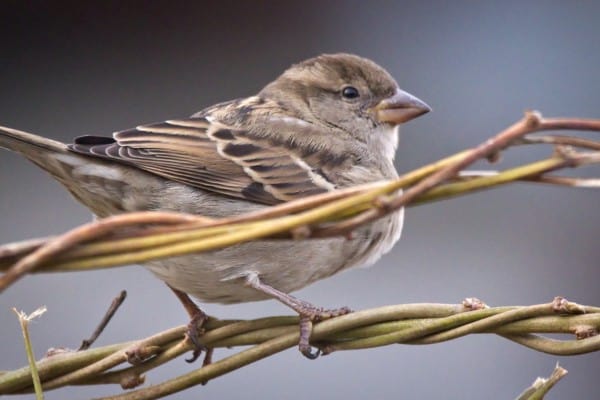
The House Sparrow is a social and adaptable bird species known for its distinctive behaviors. House Sparrows are highly social and are often found in small flocks or loose groups, engaging in vocalizations, grooming, and displays to establish social bonds. During the breeding season, they become territorial, defending their nesting sites and surrounding areas from intruders.
House Sparrows are opportunistic foragers, feeding on a varied diet. They primarily consume seeds but also feed on insects, small invertebrates, and food scraps. Their foraging behavior can be observed on the ground, in vegetation, or near human habitation, where they scavenge for food.
Vocalizations play an important role in House Sparrow behavior. They produce a range of chirps, chips, and cheeps, often in rapid and repetitive sequences. Males may sing complex songs during the breeding season to attract mates and establish territories.
Nesting and breeding are significant behaviors for House Sparrows. They are cavity nesters and construct nests in man-made structures and natural sites. Both parents are involved in incubating the eggs and caring for the young. House Sparrows are prolific breeders, often producing multiple broods in a breeding season.
House Sparrows are highly adaptable to human-altered environments and have successfully established populations in urban and agricultural areas worldwide. They readily utilize human structures and food sources, displaying nesting behaviors in buildings and foraging around outdoor dining areas.
Roosting is a communal behavior observed in House Sparrows. They often gather in large numbers at favored roosting sites, providing safety, warmth, and social interaction during non-breeding periods.
Additionally, House Sparrows engage in regular bathing and sunning behaviors. They take baths in shallow water sources and may spread their wings to expose their plumage to sunlight, aiding in feather maintenance and parasite control.
Habitat
The House Sparrow is an adaptable bird species that can thrive in a variety of habitats. Originally native to Europe and the Middle East, House Sparrows have successfully established populations in urban, suburban, and rural areas worldwide.
In urban environments, House Sparrows are commonly found in cities, towns, and villages. They are well adapted to human-altered landscapes, where they utilize buildings, bridges, and other structures for nesting and roosting. They are often seen foraging for food near outdoor dining areas, markets, and garbage dumps.
House Sparrows also occupy rural areas with agricultural fields, pastures, and farmland. They take advantage of grain crops, such as wheat and corn, and forage for seeds among grasses, weeds, and cultivated plants. They may build nests in barns, sheds, and other farm structures.
In addition to urban and rural settings, House Sparrows can be found in suburban neighborhoods with a mix of residential areas, gardens, and parklands. They are known to nest in trees, shrubs, and hedges, particularly if they provide suitable cavities or dense foliage.
Range
The House Sparrow has an established range in the Hawaiian Islands. Originally introduced to the islands, House Sparrows are now found on all eight main Hawaiian Islands, including Kaho’olawe. They frequent urban areas, agricultural settlements, and other human-inhabited landscapes throughout the islands.
However, they are not typically found in exotic or native forests. While House Sparrows have reached the Northwestern Hawaiian Islands with permanent human presence, their distribution in the archipelago primarily centers around the main islands. Monitoring efforts have observed variations in population numbers over time, with fluctuations and declines noted in certain areas.
Conservation Status

The conservation status of the House Sparrow is classified as “Least Concern” by the International Union for Conservation of Nature (IUCN). This status indicates that the species is widespread and abundant, with stable populations and no immediate threats to its survival.
House Sparrows have a global distribution and are found in a wide range of habitats, including urban, suburban, and rural areas. They are adaptable birds that can thrive in human-altered environments and take advantage of various food sources.
Interesting Facts
1. Communal roosting
House Sparrows often roost in large, communal groups, gathering at favored roosting sites such as trees, bushes, or buildings. These roosts can contain hundreds or even thousands of individuals, providing safety, warmth, and social interaction.
2. Vocal nature
House Sparrows are known for their active vocalizations. They produce a variety of calls, chirps, and songs, often with rapid and repetitive sequences. Their vocalizations serve various purposes, including communication within flocks and establishing territorial boundaries.
3. Plumage differences
Male House Sparrows exhibit more vibrant plumage than females. Males have gray crowns, black throats, and chestnut-brown napes, while females have paler brown crowns and buff-colored underparts.
4. Bold and opportunistic
House Sparrows are known for their bold and opportunistic behavior. They are not shy around humans and can be seen approaching outdoor dining areas or scavenging for food scraps. Their adaptability and willingness to exploit various food sources contribute to their success.
Frequently Asked Questions
1. How long do House Sparrows live?
In the wild, House Sparrows typically have a lifespan of 3 to 4 years. However, individuals that survive the hazards of their environment can live up to 10 years or more.
2. Do House Sparrows migrate?
House Sparrows generally have limited migratory behavior. While they may exhibit some movements in response to changing food availability or harsh weather conditions, they are not considered long-distance migrants like many other bird species.
3. Are House Sparrows beneficial or harmful to gardens and crops?
House Sparrows can have both positive and negative effects on gardens and crops. While they may help control insect populations by feeding on garden pests, they can also cause damage by pecking at fruits, vegetables, and newly planted seeds.
4. Why do House Sparrows gather in large flocks?
House Sparrows are highly social birds, and gathering in large flocks provides them with protection, better foraging opportunities, and enhanced communication. Flocking behavior also allows them to establish dominance hierarchies and coordinate group movements.
